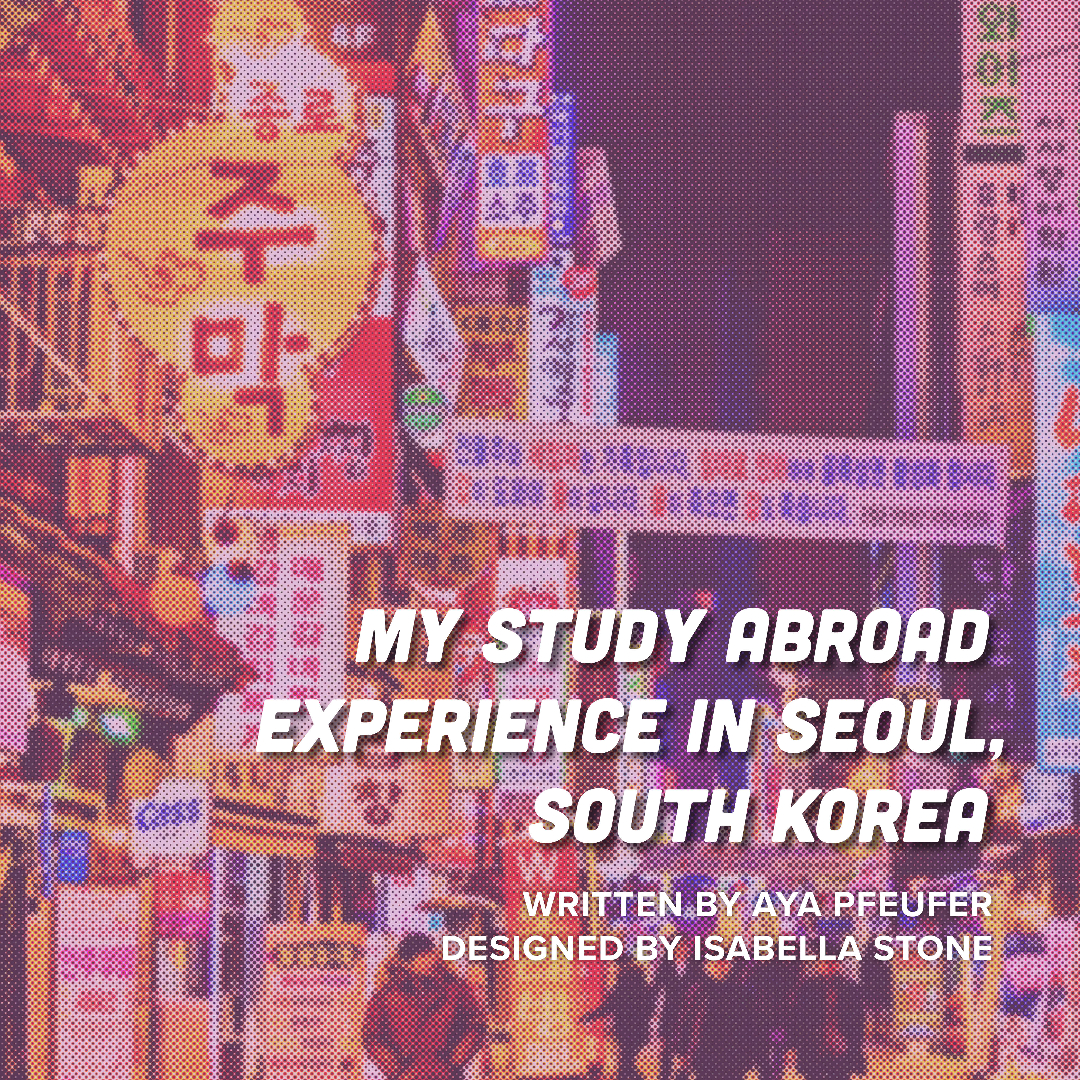
Located in Seoul, South Korea, the K-culture (Traditional and Popular), is a new dialogue that was first offered in May 2024. Fifteen students participated, most of whom are design majors, as well as business, nursing and neuroscience.
It was my first time traveling to Seoul, participating in a dialogue and taking typography and design classes. I was excited as I was interested in Korean culture, specifically the history of the Korean language and trying different dishes. It was an interesting experience as I got to see the cultural landscapes, such as the temples, beyond the city. I met my peers in the program, the tour guides who were showing us different areas in Seoul and local Korean students. My peers and I stayed at Somerset Palace Seoul Hotel, where we explored the surrounding area with our tour guide and I explored a new area of academia, having never taken classes like these before.
The dialogue program was run by The Council on International Educational Exchange, or CIEE, an organization based in Seoul that creates daily and weekend activities as a chance for students to explore both the city’s modern and traditional areas. With CIEE, we visited many popular places, including Lotte World, Seoul Sky and the Korean Demilitarized Zone (DMZ).
Image: Korean Demilitarized Zone (DMZ)
Image: Seoul Sky
We also visited museums such as the Lotte Museum of Art, the National Hangeul Museum, the Seoul Museum of Art and Museum San. Visiting the DMZ was an unforgettable experience. I learned more about the history of South Korea and North Korea and I saw observational areas along the border of North Korea. We also explored the DMZ Museum, where I had the opportunity to learn more about Korea’s history through preserved artifacts and historical photographs.
We were immersed in the experience, looking at and learning about various works of art in each of the museums. One of my favorite works, in Museum SAN, was Space-Division Pieces by James Turrell, an American artist known for his work within the Light and Space movement. It was my favorite exhibition as I saw how Turrell creatively altered light through different perceptions. At the National Hangeul Museum, we saw more artwork such as traditional Korean writing, which made me appreciate Hangul even more because of the aesthetics. The tours were usually conducted during the day, where we got to explore each museum in depth, engage with the tour guide and ask any questions we had about the artwork.
On top of exploring these classic museums in Seoul, we got to experience Korean culture by trying different traditional Korean foods and side dishes such as kimchi, a spicy cabbage that is very popular in Korea. We also tried gimbap, or kimbap, a Korean dish made from cooked rice, vegetables and fish or meat wrapped in sheets of dried seaweed. Trying Kimchi pancakes in Korea for the first time was on a different level. These are made with a combination of flour batter, kimchi and sometimes a mix of other vegetables. Out of the many different types of dishes I’ve tried, I would say that the kimchi pancakes were my favorite — they hit the spot. The spice of the flavorful kimchi with the crispy crust left me satisfied. I was also impressed with the seasoning when I tried gimbap for the first time. The vegetables were seasoned perfectly.
We also visited Gyeongbokgung Palace, which was the main royal palace of the Joseon dynasty. Built in 1395, it is the largest palace constructed by the Joseon dynasty. Gyeongbokgung’s primary purpose was to house the royal family. We explored the palace with “Seoul Mates” which were assigned to small groups of us. Seoul Mates are local Korean University students who acted as tour guides, answering questions and showing us around. It was a good experience not only to meet Korean university students but also to explore the rich Korean culture. I met a few Seoul Mates who told me about themselves, and what it’s like to live in Korea.
During our time there, a number of festivals occurred, such as the Korean Food Festival and the Korean Beauty Festival which were not too far from our accommodation. There, food stands were set up selling different types of foods and drinks, and there was live music accompanied by dance groups performing K-pop songs, which was a lively scenery.
Overall, the dialogue was a great experience because I got to immerse myself in Korean culture and learn about a new subject area. Additionally, I was grateful for the opportunity to engage with others and discover perspectives.